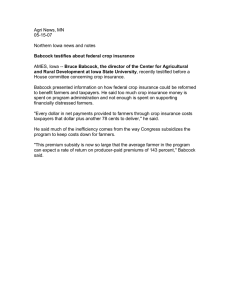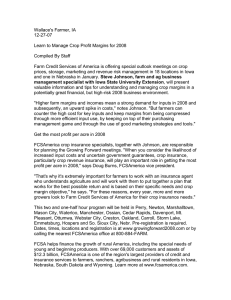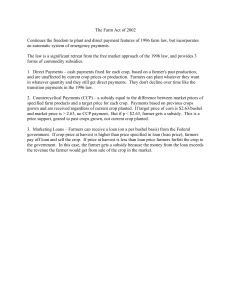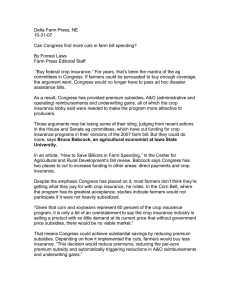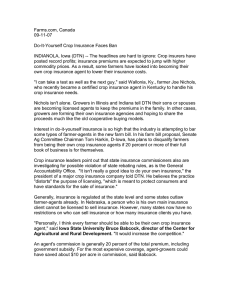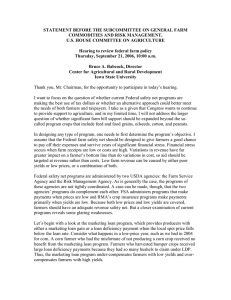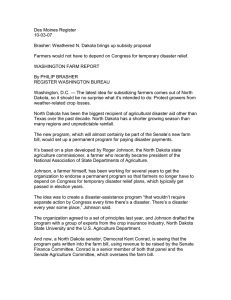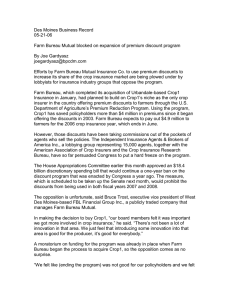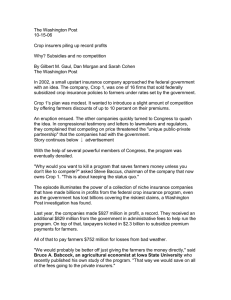Wallace's Farmer, IA 05-25-07 Crop Insurance Should Be Part of Farm Bill
advertisement
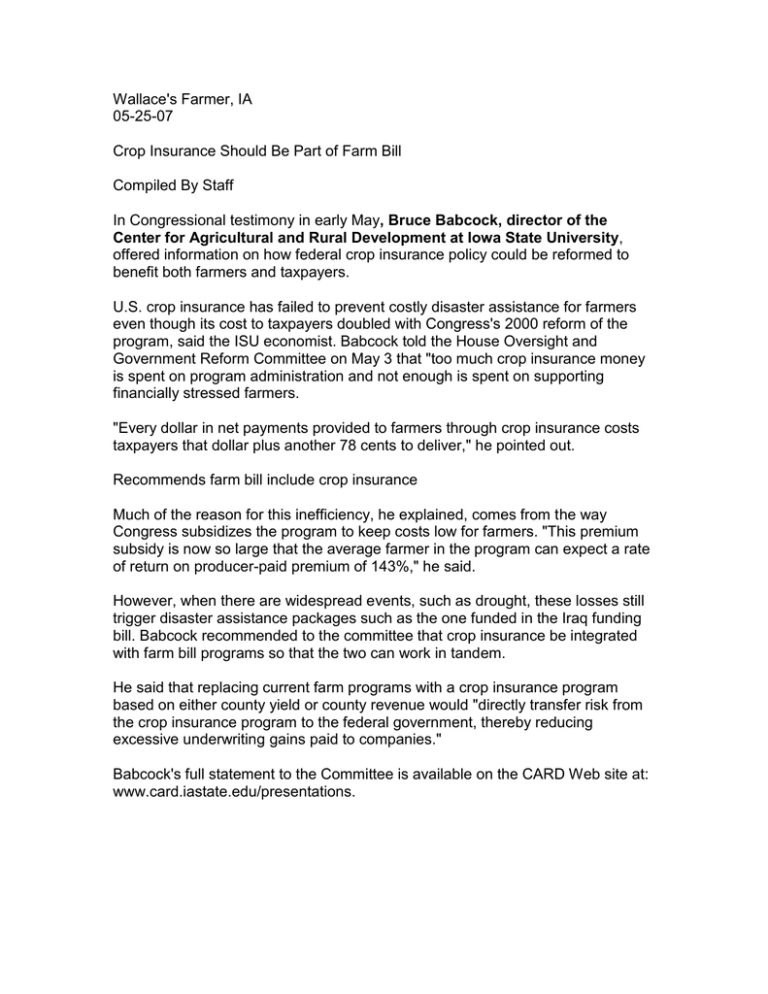
Wallace's Farmer, IA 05-25-07 Crop Insurance Should Be Part of Farm Bill Compiled By Staff In Congressional testimony in early May, Bruce Babcock, director of the Center for Agricultural and Rural Development at Iowa State University, offered information on how federal crop insurance policy could be reformed to benefit both farmers and taxpayers. U.S. crop insurance has failed to prevent costly disaster assistance for farmers even though its cost to taxpayers doubled with Congress's 2000 reform of the program, said the ISU economist. Babcock told the House Oversight and Government Reform Committee on May 3 that "too much crop insurance money is spent on program administration and not enough is spent on supporting financially stressed farmers. "Every dollar in net payments provided to farmers through crop insurance costs taxpayers that dollar plus another 78 cents to deliver," he pointed out. Recommends farm bill include crop insurance Much of the reason for this inefficiency, he explained, comes from the way Congress subsidizes the program to keep costs low for farmers. "This premium subsidy is now so large that the average farmer in the program can expect a rate of return on producer-paid premium of 143%," he said. However, when there are widespread events, such as drought, these losses still trigger disaster assistance packages such as the one funded in the Iraq funding bill. Babcock recommended to the committee that crop insurance be integrated with farm bill programs so that the two can work in tandem. He said that replacing current farm programs with a crop insurance program based on either county yield or county revenue would "directly transfer risk from the crop insurance program to the federal government, thereby reducing excessive underwriting gains paid to companies." Babcock's full statement to the Committee is available on the CARD Web site at: www.card.iastate.edu/presentations.
